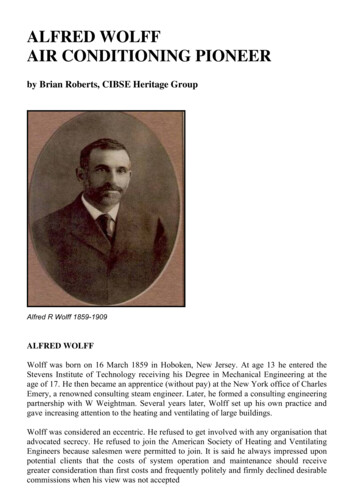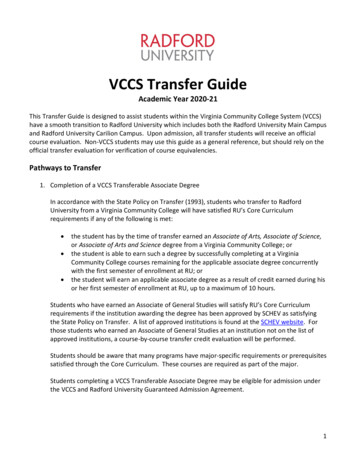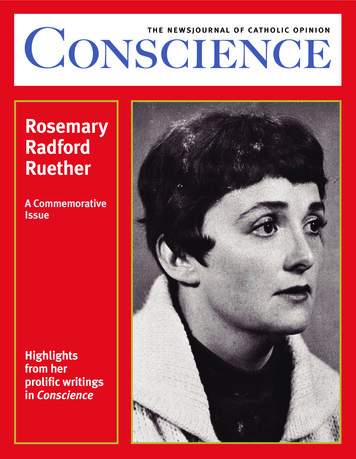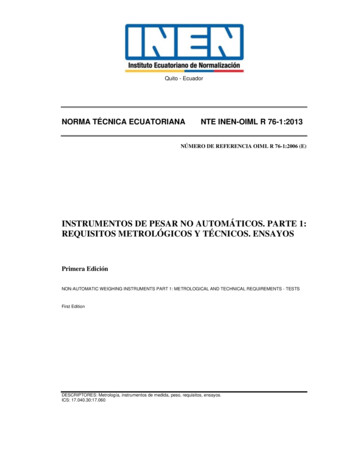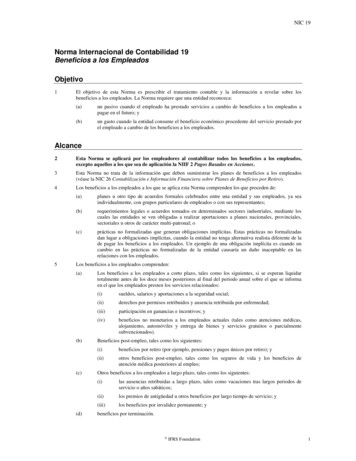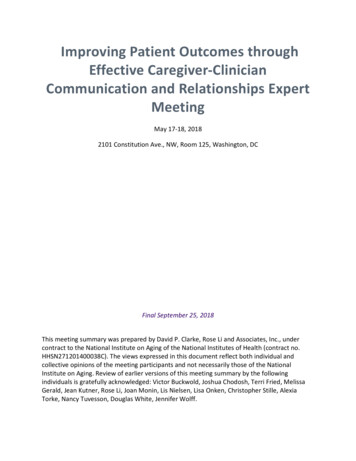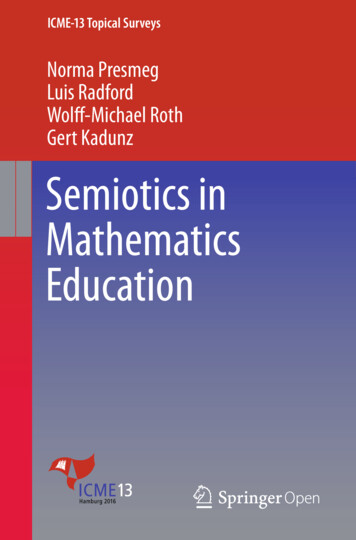
Transcription
ICME-13 Topical SurveysNorma PresmegLuis RadfordWolff-Michael RothGert KadunzSemiotics inMathematicsEducation
ICME-13 Topical SurveysSeries editorGabriele Kaiser, Faculty of Education, University of Hamburg, Hamburg, Germany
More information about this series at http://www.springer.com/series/14352
Norma Presmeg Luis RadfordWolff-Michael Roth Gert Kadunz Semiotics in MathematicsEducation
Wolff-Michael RothLansdowne Professor of Applied CognitiveScienceUniversity of VictoriaVictoria, BCCanadaNorma PresmegDepartment of MathematicsIllinois State UniversityNormal, ILUSALuis RadfordÉcole des Sciences de l’EducationUniversité LaurentienneSudbury, ONCanadaISSN 2366-5947ICME-13 Topical SurveysISBN 978-3-319-31369-6DOI 10.1007/978-3-319-31370-2Gert KadunzDepartment of MathematicsAlpen-Adria Universitaet KlagenfurtKlagenfurtAustriaISSN 2366-5955(electronic)ISBN 978-3-319-31370-2(eBook)Library of Congress Control Number: 2016935590 The Editor(s) (if applicable) and The Author(s) 2016. This book is published open access.Open Access This book is distributed under the terms of the Creative Commons AttributionNonCommercial 4.0 International License (http://creativecommons.org/licenses/by-nc/4.0/), which permits any noncommercial use, duplication, adaptation, distribution, and reproduction in any medium orformat, as long as you give appropriate credit to the original author(s) and the source, a link is provided tothe Creative Commons license, and any changes made are indicated.The images or other third party material in this book are included in the work’s Creative Commonslicense, unless indicated otherwise in the credit line; if such material is not included in the work’sCreative Commons license and the respective action is not permitted by statutory regulation, users willneed to obtain permission from the license holder to duplicate, adapt, or reproduce the material.This work is subject to copyright. All rights are reserved by the Publisher, whether the whole or partof the material is concerned, specifically the rights of translation, reprinting, reuse of illustrations,recitation, broadcasting, reproduction on microfilms or in any other physical way, and transmissionor information storage and retrieval, electronic adaptation, computer software, or by similar or dissimilarmethodology now known or hereafter developed.The use of general descriptive names, registered names, trademarks, service marks, etc. in this publication does not imply, even in the absence of a specific statement, that such names are exempt from therelevant protective laws and regulations and therefore free for general use.The publisher, the authors and the editors are safe to assume that the advice and information in thisbook are believed to be true and accurate at the date of publication. Neither the publisher nor theauthors or the editors give a warranty, express or implied, with respect to the material contained herein orfor any errors or omissions that may have been made.Printed on acid-free paperThis Springer imprint is published by Springer NatureThe registered company is Springer International Publishing AG Switzerland
Main Topics Nature of semiotics and its significance for mathematics education;Influential theories of semiotics;Applications of semiotics in mathematics education;Various types of signs in mathematics education;Other dimensions of semiotics in mathematics education.v
Contents1 Introduction: What Is Semiotics and Why Is It Importantfor Mathematics Education? . . . . . . . . . . . . . . . . . . . . . . . . . . . . . .1.1 The Role of Visualization in Semiosis . . . . . . . . . . . . . . . . . . . .1.2 Purpose of the Topical Survey on Semiotics in MathematicsEducation . . . . . . . . . . . . . . . . . . . . . . . . . . . . . . . . . . . . . . . .2 Semiotics in Theory and Practice in Mathematics Education . . .2.1 A Summary of Influential Semiotic Theories and Applications .2.1.1 Saussure . . . . . . . . . . . . . . . . . . . . . . . . . . . . . . . . .2.1.2 Peirce . . . . . . . . . . . . . . . . . . . . . . . . . . . . . . . . . . .2.1.3 Vygotsky . . . . . . . . . . . . . . . . . . . . . . . . . . . . . . . .2.2 Further Applications of Semiotics in Mathematics Education . .2.3 The Significance of Various Types of Signs in MathematicsEducation . . . . . . . . . . . . . . . . . . . . . . . . . . . . . . . . . . . . .2.3.1 Embodiment, Gestures, and the Body in MathematicsEducation . . . . . . . . . . . . . . . . . . . . . . . . . . . . . . . .2.3.2 Linguistic Theories and Their Relevancein Mathematics Education . . . . . . . . . . . . . . . . . . . . .2.4 Other Dimensions of Semiotics in Mathematics Education. . . .2.4.1 The Relationship Among Sign Systemsand Translation . . . . . . . . . . . . . . . . . . . . . . . . . . . .2.4.2 Semiotics and Intersubjectivity. . . . . . . . . . . . . . . . . .2.4.3 Semiotics as the Focus of Innovative Learningand Teaching Materials. . . . . . . . . . . . . . . . . . . . . . .123.55571015.22.22.2426.2628.283 A Summary of Results . . . . . . . . . . . . . . . . . . . . . . . . . . . . . . . . . .31References. . . . . . . . . . . . . . . . . . . . . . . . . . . . . . . . . . . . . . . . . . . . . .33vii
Chapter 1Introduction: What Is Semiotics and WhyIs It Important for MathematicsEducation?Over the last three decades, semiotics has gained the attention of researchersinterested in furthering the understanding of processes involved in the learningand teaching of mathematics (see, e.g., Anderson et al. 2003; Sáenz-Ludlow andPresmeg 2006; Radford 2013a; Radford et al. 2008, 2011; Sáenz-Ludlow andKadunz 2016). Semiotics has long been a topic of relevance in connection withlanguage (e.g., Saussure 1959; Vygotsky 1997). But what is semiotics, and why is itsignificant for mathematics education?Semiosis is “a term originally used by Charles S. Peirce to designate any signaction or sign process: in general, the activity of a sign” (Colapietro 1993, p. 178).A sign is “something that stands for something else” (p. 179); it is one segmentationof the material continuum in relation to another segmentation (Eco 1986). Semiotics,then, is “the study or doctrine of signs” (Colapietro 1993, p. 179). Sometimesdesignated “semeiotic” (e.g., by Peirce), semiotics is a general theory of signs or, asEco (1988) suggests, a theory of how signs signify, that is, a theory of sign-ification.The study of signs has long and rich history. However, as a self-conscious anddistinct branch of inquiry, semiotics is a contemporary field originally flowing fromtwo independent research traditions: those of C.S. Peirce, the American philosopherwho originated pragmatism, and F. de Saussure, a Swiss linguist generally recognized as the founder of contemporary linguistics and the major inspiration forstructuralism. In addition to these two research traditions, several others implicatesemiotics either directly or implicitly: these include semiotic mediation (the “early”Vygotsky 1978), social semiotic (Halliday 1978), various theories of representation(Goldin and Janvier 1998; Vergnaud 1985; Font et al. 2013), relationships amongstsign systems (Duval 1995), and more recently, theories of embodiment that includegestures and the body as a mode of signification (Bautista and Roth 2012; de Freitasand Sinclair 2013; Radford 2009, 2014a; Roth 2010). Components of some of thesetheories are elaborated in what follows.The significance of semiosis for mathematics education lies in the use of signs;this use is ubiquitous in every branch of mathematics. It could not be otherwise: the The Author(s) 2016N. Presmeg, Semiotics in Mathematics Education,ICME-13 Topical Surveys, DOI 10.1007/978-3-319-31370-2 11
21 Introduction: What Is Semiotics and Why Is It Important objects of mathematics are ideal, general in nature, and to represent them—to othersand to oneself—and to work with them, it is necessary to employ sign vehicles,1which are not the mathematical objects themselves but stand for them in some way.An elementary example is a drawing of a triangle—which is always a particularcase—but which may be used to stand for triangles in general (Radford 2006a). Asa text on the origin of (Euclidean) geometry suggests, the mathematical conceptsare the result of the continuing refinement of physical objects Greek craftsmen wereable to produce (Husserl 1939). For example, craftsmen were producing rollingthings called in Greek kulindros (roller), which led to the mathematical notion ofthe cylinder, a limit object that does not bear any of the imperfections that a materialobject will have. Children’s real problems are in moving from the material thingsthey use in their mathematic classes to the mathematical things (Roth 2011). Thisprinciple of “seeing an A as a B” (Otte 2006; Wartofsky 1968) is by no meansstraightforward and directly affects the learning processes of mathematics at alllevels (Presmeg 1992, 2006a; Radford 2002a). Thus semiotics, in several traditionalframeworks, has the potential to serve as a powerful theoretical lens in investigatingdiverse topics in mathematics education research.1.1The Role of Visualization in SemiosisThe sign vehicles that are used in mathematics and its teaching and learning areoften of a visual nature (Presmeg 1985, 2014). The significance of semiosis formathematics education can also be seen in the growing interest of the use of imageswithin cultural science. It was Thomas Mitchel’s dictum that the linguistic turn isfollowed now by a “pictorial turn” or an “iconic turn” (Boehm 1994). The concentration on visualisation in cultural sciences is based on their interest in the fieldof visual arts and it is still increasing (Bachmann-Medick 2009). But more interesting for our view on visualisation are developments within science which haveintroduced very sophisticated methods for constructing new images. For example,medical imaging allows us to see what formerly was invisible. Other examplescould be modern telescopes, which allow us to see nearly infinite distant objects, ormicroscopes, which bring the infinitely small to our eyes. With the help of thesemachines such tiny structures become visible and with this kind of visibility theybecame a part of the scientific debate. As long as these structures were not visiblewe could only speculate about them; now we can debate about them and about theirexistence. We can say that their ontological status has changed. In this regardimages became a major factor within epistemology. Such new developments, whichA note on terminology: The term “sign vehicle” is used here to designate the signifier, when theobject is the signified. Peirce sometimes used the word “sign” to designate his whole triad, object[signified]-representamen [signifier]-interpretant; but sometimes Peirce used the word “sign” indesignating the representamen only. To avoid confusion, “sign vehicle” is used for therepresentamen/signifier.1
1.1 The Role of Visualization in Semiosis3can only be hinted at here, caused substantial endeavour within cultural science intoinvestigating the use of images from many different perspectives (see, e.g., Mitchell1987; Arnheim 1969; Hessler and Mersch 2009). The introduction to “Logik desBildlichen” (Hessler and Mersch 2009), which we can translate as “The Logic ofthe Pictorial”, focusses on the meaning of visual thinking. In this book, they formulate several relevant questions on visualisation which could/should be answeredby a science of images. Among these questions we read: epistemology and images,the order of demonstrating or how to make thinking visible.Let’s take a further look at a few examples of relevant literature from culturalscience concentrating on the “visual.” In their book The culture of diagram (Benderand Marrinan 2010) the authors investigate the interplay between words, pictures,and formulas with the result that diagrams appear to be valuable tools to understandthis interplay. They show in detail the role of diagrams as means to constructknowledge and interpret data and equations. The anthology The visual culturereader (Mirzoeff 2002) presents in its theory chapter “Plug-in theory,” the work ofseveral researchers well known for their texts on semiotics, including Jaques Lacanand Roland Barthes, with their respective texts “What is a picture?” (p. 126) and“Rhetoric of the image” (p. 135). Another relevant anthology, Visual communication and culture, images in action (Finn 2012) devotes the fourth chapter toquestions which concentrate on maps, charts and diagrams. And again theoreticalapproaches from semiotics are used to interpret empirical data: In “Powell’s point:Denial and deception at the UN,” Finn makes extensive use of semiotic theories.Even in the theory of organizations, semiotics is used as means for structuring: Inhis book on Visual culture in organizations Styhre (2010) presents semiotics as oneof his main theoretical formulations.1.2Purpose of the Topical Survey on Semioticsin Mathematics EducationResonating with the importance of semiotics in the foregoing areas, the purpose ofthis Topical Survey is to explore the significance—for research and practice—ofsemiotics for understanding issues in the teaching and learning of mathematics at alllevels. The structure of the next section is as follows. There are four broad overlapping subheadings:(1)(2)(3)(4)A summary of influential semiotic theories and applications;Further applications of semiotics in mathematics education;The significance of various types of signs in mathematics education;Other dimensions of semiotics in mathematics education.Within each of these sections, perspectives and issues that have been the focus ofresearch in mathematics education are presented, to give an introduction to what hasalready been accomplished in this field, and to open thought to the potential for
41 Introduction: What Is Semiotics and Why Is It Important further developments. This Survey is thus an introduction, which cannot be fullycomprehensive, and interested readers are encouraged to read original papers cited,for greater depth and detail.Open Access This chapter is distributed under the terms of the Creative Commons AttributionNonCommercial 4.0 International License (http://creativecommons.org/licenses/by-nc/4.0/), whichpermits any noncommercial use, duplication, adaptation, distribution and reproduction in anymedium or format, as long as you give appropriate credit to the original author(s) and the source, alink is provided to the Creative Commons license and any changes made are indicated.The images or other third party material in this chapter are included in the work’s CreativeCommons license, unless indicated otherwise in the credit line; if such material is not included inthe work’s Creative Commons license and the respective action is not permitted by statutoryregulation, users will need to obtain permission from the license holder to duplicate, adapt, orreproduce the material.
Chapter 2Semiotics in Theory and Practicein Mathematics Education2.1A Summary of Influential Semiotic Theoriesand ApplicationsBoth Peirce and de Saussure developed theories dealing with signs and signification. Because these differ in a significant aspect—a three-fold relation in the case ofthe former, a two-fold relation in the case of the latter—Peirce’s version goes undersemiotics, whereas de Saussure’s version often is referred to as semiology.2.1.1SaussureThe basic ideas of this semiotic theory are as follows. Ferdinand de Saussure’s(1959) semiology was developed in the context of his structural theory of generallinguistics. In this theory, a linguistic sign is the result of coupling two elements, aconcept and an acoustic image. To anticipate ambiguities de Saussure proposed tounderstand the sign as the relation of a signified and a signifier, in a close, inseparable relationship (metaphorically, like the two sides of a single piece of paper, ashe suggests). He uses two now classical diagrams to exemplify the sign. In the first,the Latin word arbor [tree] (on the bottom) and the French «arbre» [tree] (on top)form a sign, where the former is the signifier and the latter the signified. In thesecond diagram, arbor is retained as the signifier but the drawing of a tree takes theplace of the signified. It is noteworthy that both components in this dyad arepsychological1: the acoustic image is a psychological pattern of a sound, whichcould be a word, a phrase, or even an intonation. These signifiers are arbitrary, in1De Saussure uses the French psychique [psychical] rather than mental, just as Vygotsky will usepsixičeskij [psychical] rather than duxovnyj [mental]. In both instances, the adjective psychologicalis the better choice because it allows for bodily knowing that is not mental in kind (e.g., Roth2016b). The Author(s) 2016N. Presmeg, Semiotics in Mathematics Education,ICME-13 Topical Surveys, DOI 10.1007/978-3-319-31370-2 25
62 Semiotics in Theory and Practice in Mathematics Educationthe sense that there is no logical necessity underlying them—which accounts forhumanity’s many languages—but they are not the product of whim because theyare socially determined.This theory has applications in mathematics education. Saussure’s ideas werebrought to the attention of the mathematics education community in the 1990s in akeynote presentation by Whitson (1994), and by Kirshner and Whitson in thecontext of a book on situated cognition, in a chapter titled “Cognition as a semiosicprocess: From situated mediation to critical reflective transcendence” (Whitson1997). Whitson pointed out that for Saussure, although there was interplay betweenthe signified and signifier (denoted by arrows in both directions in his diagrams),the signified, as the top element of the dyad, appeared to dominate the signifier.Lacan (1966) had inverted this relationship, placing the signifier on top of thesignified, creating a chain of signifiers that never really attain the signified. Thisversion of semiology was used by Walkerdine (1988), and also became important inPresmeg’s research in the 1990s using chains of signification to connect culturalpractices of students, in a series of steps, with the canonical mathematical ideasfrom the syllabuses used by teachers of classroom mathematics (Presmeg 1997).The Lacanian version also is central to a recent conceptualization of subjectivity inmathematics education, which emphasizes that “the signifier does not mark a thing”but “marks a point of pure difference or movement in a discursive chain” (Brown2011, p. 112). This movement from signifier to signifier creates an effect similar tothe interpretant in Peircean semiotics, where one sign–referent relation replacesanother sign–referent relation leading to infinite (unlimited) semiosis (Nöth 1990).The theoretical ideas of de Saussure have not been used as extensively inmathematics education research as those of Peirce, and of Vygotsky (in his earliernotion of semiotic mediation), but there are aspects of Saussure’s theory that arehighly significant. As Fried (2007, 2008) points out, de Saussure’s notions ofsynchronicity and diachronicity are particularly useful in clarifying ways of lookingat both the history of mathematics, and the processes involved in teaching andlearning mathematics. The synchronic view is a snapshot in time, while a diachronic analysis is a longitudinal one. A useful botanical metaphor is that synchrony refers to a cross-section of a plant stem, while diachrony takes a longitudinalsection. These views are complementary, and both are necessary for a full understanding of a phenomenon (Fried 2007). In mathematics education we are interestednot only in understanding what is taught and learned in a given situation (synchrony), but particularly in how ideas change—in the processes involved as students engage over time with mathematical objects (diachrony). In both thesynchronic and diachronic views, sign vehicles play a significant role in standingfor mathematical objects; hence both of these distinct viewpoints are useful insemiotic analyses.The dyadic model of Saussure proved inadequate to account for the results ofPresmeg’s research, and was later replaced by a Peircean nested model that invokedthe interpretant (Presmeg 1998, 2006b).
2.1 A Summary of Influential Semiotic Theories and Applications2.1.27PeirceThe basic ideas of this theory are as follows. According to Peirce (1992), trichotomic is the art of making three-fold divisions. By his own admission, heshowed a proclivity for the number three in his philosophical thinking. “But it willbe asked, why stop at three?” he wrote (Peirce 1992, p. 251), and his reply to thequestion is as follows:[W]hile it is impossible to form a genuine three by any modification of the pair, withoutintroducing something of a different nature from the unit and the pair, four, five, and everyhigher number can be formed by mere complications of threes. (p. 251)Accordingly, he used triads not only in his semiotic model including object,representamen [sign vehicle], which stands for the object in some way, and interpretant, but also in the types of each of these components. These types are notinherent in the signs themselves, but depend on the interpretations of their constituent relationships between sign vehicles and objects. In a letter to Lady Welbyon December 23, 1908, he wrote as follows.I define a Sign as anything which is so determined by something else, called its Object, andso determines an effect upon a person, which effect I call its Interpretant, that the latter isthereby mediately determined by the former. My insertion of “upon a person” is a sop toCerberus, because I despair of making my own broader conception understood. I recognizethree Universes, which are distinguished by three Modalities of Being. (Peirce 1998,p. 478)It follows that different individuals may construct different interpretants from thesame sign vehicle, thus effectively creating different signs for the same object.Peirce developed several typologies of signs. Maybe the best known typology isthe one based on the kind of relationship between a sign vehicle and its object. Therelationship leads to three kinds of signs: iconic, indexical, and symbolic. Toillustrate the differences among iconic, indexical, and symbolic signs, it may beuseful to look at some of Peirce’s examples. In an iconic sign, the sign vehicle andthe object share a physical resemblance, e.g., a photograph of a person representingthe actual person. Signs are indexical if there is some physical connection betweensign vehicle and object, e.g., smoke invoking the interpretation that there is fire, or asign-post pointing to a road. The nature of symbolic signs is that there is an elementof convention in relating a particular sign vehicle to its object (e.g., algebraicsymbolism). These distinctions in mathematical signs are complicated by the factthat three different people may categorize the ‘same’ relationship between a signvehicle and its object in such a way that it is iconic, indexical, or symbolicrespectively, according to their interpretations. In practice the distinctions are subtlebecause they depend on the interpretations of the learner—and therefore, viewed inthis way, the distinctions may be useful to a researcher or teacher for the purpose ofidentifying the subtlety of a learner’s mathematical conceptions if differences ininterpretation are taken into account.
82 Semiotics in Theory and Practice in Mathematics EducationPeirce also introduced three conceptual categories that he termed firstness,secondness, and thirdness. Firstness has to do with that which makes possible therecognizance of something as it appears in the phenomenological realm. It has to dowith the qualia of the thing. We become aware of things because we are able torecognize their own quale. A quale is the distinctive mark of something, regardlessof something else (it is its suchness). “Each quale is in itself what it is for itself,without reference to any other” (Peirce CP 6.224). Thus, what allows us to perceivea red rose is the quality of redness. Were we to be left without qualia, we would notbe able to perceive anything. However, quale is not perception yet. It is its merepossibility: it is firstness—the first category of being in Peirce’s account. “Themode of being a redness, before anything in the universe was yet red, was nevertheless a positive qualitative possibility” (CP 1.25). Qualia—such as bitter, tedious,hard, heartrending, noble (CP. 1.418)—account hence for the possibility of experience, making it possible to note that something is there, positioned, as it were, inthe boundaries of consciousness (Radford 2008a).Now, the very eruption of the object into our field of perception marks theindexical moment of consciousness. It is a moment of actuality or occurrence. Here,we enter secondness:We find secondness in occurrence, because an occurrence is something whose existenceconsists in our knocking up against it. A hard fact is of the same sort; that is to say, it issomething which is there, and which I cannot think away, but am forced to acknowledge asan object or second beside myself, the subject or number one, and which forms material forthe exercise of my will. (Peirce CP 1.358)Because we have reached awareness, the object now becomes an object ofknowledge. But knowledge is not an array of isolated facts or events. Rather, itresults from a linkage between facts, and this link, Peirce argues, requires us toenter into a level that goes beyond quality (firstness) and factuality (secondness).This new level (thirdness) requires the use of symbols. Commenting on the subtleties of the interrelationships amongst firstness, secondness, and thirdness aseither ontological or as phenomenological categories Sáens-Ludlow and Kadunz(2016) mention the following:Peirce’s semiotics is founded on his three connected categories, which can be differentiatedfrom each other, and which cannot be reduced to one another. Peirce argued that there arethree and only three categories: ‘He claims that he has look[ed] long and hard to disprovehis doctrine of three categories but that he has never found anything to contradict it, and heextends to everyone the invitation to do the same’ (de Waal 2013, p. 44). The existence ofthese three categories has been called Peirce’s theorem. He considers these categories tobe both ontological and phenomenological; the former deals with the nature of being andthe latter with the phenomenon of conscious experience. (Sáenz-Ludlow and Kadunz 2016,p. 4)Peirce’s model includes the need for expression or communication: “Expressionis a kind of representation or signification. A sign is a third mediating between themind addressed and the object represented” (Peirce 1992, p. 281). In an act ofcommunication, then—as in teaching—there are three kinds of interpretant, asfollows:
2.1 A Summary of Influential Semiotic Theories and Applications9 the “Intensional Interpretant, which is a determination of the mind of theutterer”; the “Effectual Interpretant, which is a determination of the mind of the interpreter”; and the “Communicational Interpretant, or say the Cominterpretant, which is adetermination of that mind into which the minds of utterer and interpreter haveto be fused in order that any communication should take place.” (Peirce 1998,p. 478, his emphasis)It is the latter fused mind that Peirce designated the commens. The commensproved to be an illuminating lens in examining the history of geometry (Presmeg2003).The complexity and subtlety of Peirce’s notions result in opportunities for theiruse in a wide variety of research studies in mathematics education.Applications in mathematics education are as follows.As an example, let us examine the quadratic formula in terms of the triad of iconic,indexical, and symbolic sign vehicles. The roots of the equation ax2 þ bx þ c ¼ 0are given by the well-known formulax1;2 ¼ b ��ffib2 4ac:2aBecause symbols are used, the interpreted relationship of this inscription with itsmathematical object may be characterized as symbolic, involving convention.However, depending on the way the inscription is interpreted, the sign could also becharacterized as iconic or indexical. The formula involves spatial shape. InPresmeg’s (1985) original research study of visualization in high school mathematics, many of the 54 students interviewed reported spontaneously that theyremembered this formula by an image of its shape, an iconic property. However, theformula is also commonly interpreted as a pointer (cf. a direction sign on a road): it isa directive to perform the action of substituting values for the variables a, b, and c inorder to solve the equation. In this sense the formula is indexical. Thus whether thesign vehicle of the formula is classified as iconic, indexical, or symbolic depends onthe interpretant of the sign. The phenomenological classification is of importance.The Peircean approach also was central to a study of how professionals, scientists and technicians, read graphs (Roth and Bowen 2001). In that study, certainaspects of graphs (e.g., the value of a function or its slope at a certain value of theabscissa) were taken as a sign that referred to some biological phenomenon, such aschanges in population size. Importantly, the study pointed out that the signs did notjust exist. Instead, these needed to emerge from the interpretive activity before theycould be related to a biological phenomenon. The results may be understood interms of the definition of the sign as relation between two segmentations of thematerial continuum (Eco 1986). As a study of the transformations within a scientificresearch group shows, not the material matters to signification but the form of this
102 Semiotics in Theory and Practice in Mathematics Educationmaterial (Latour 1993). In the case of familiar signs that appear in familiar circumstan
Presmeg 2006; Radford 2013a; Radford et al. 2008, 2011; Sáenz-Ludlow and Kadunz 2016). Semiotics has long been a topic of relevance in connection with language (e.g., Saussure 1959; Vygotsky 1997). But what is semiotics, and why is it significant for mathematics education? Semiosis is "a term originally used by Charles S. Peirce to .
